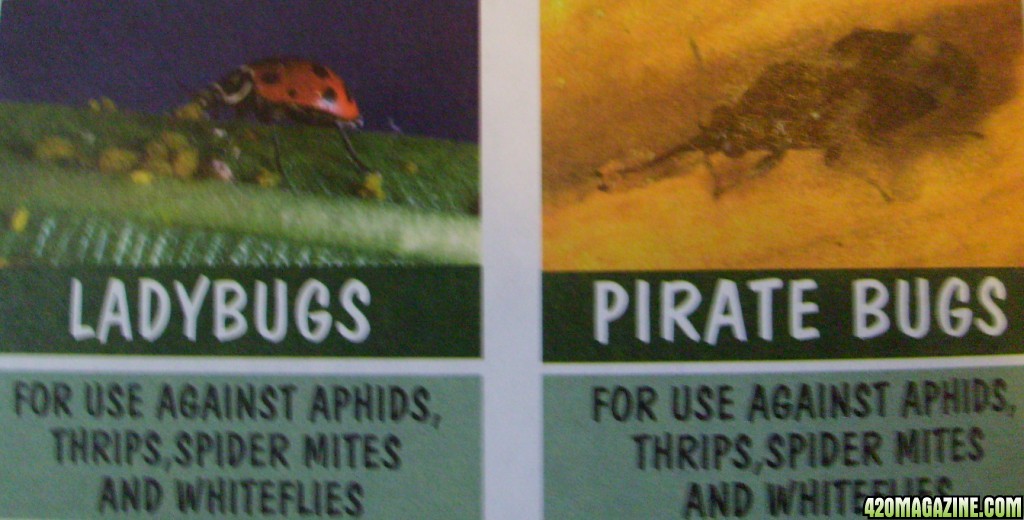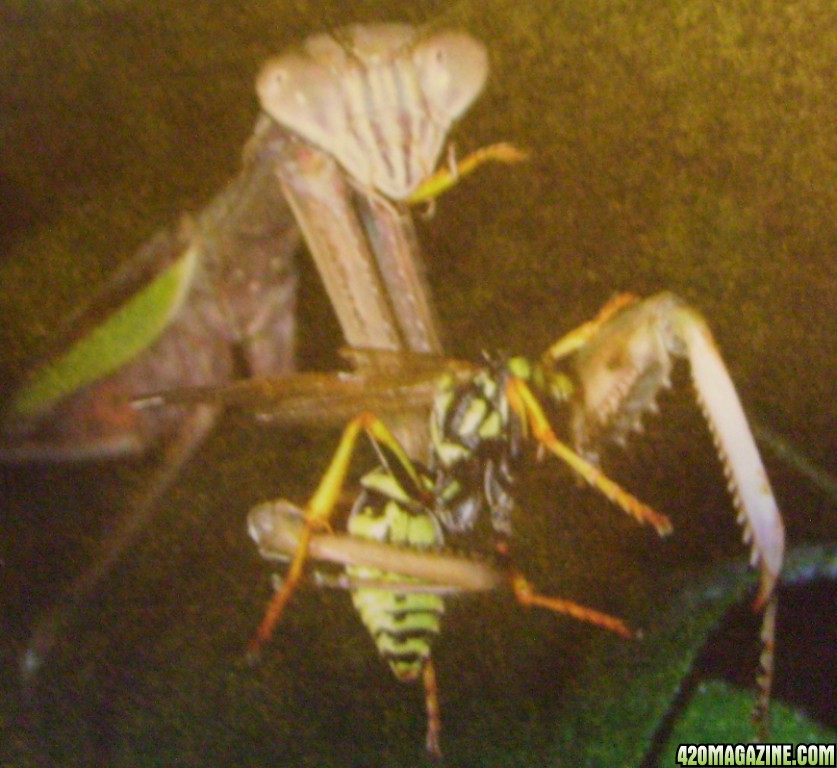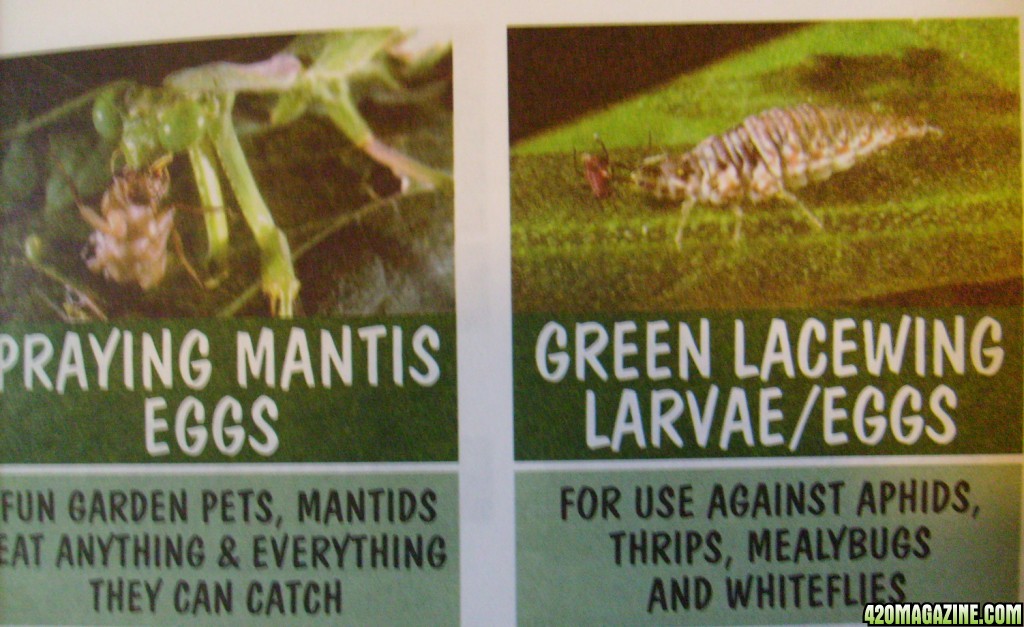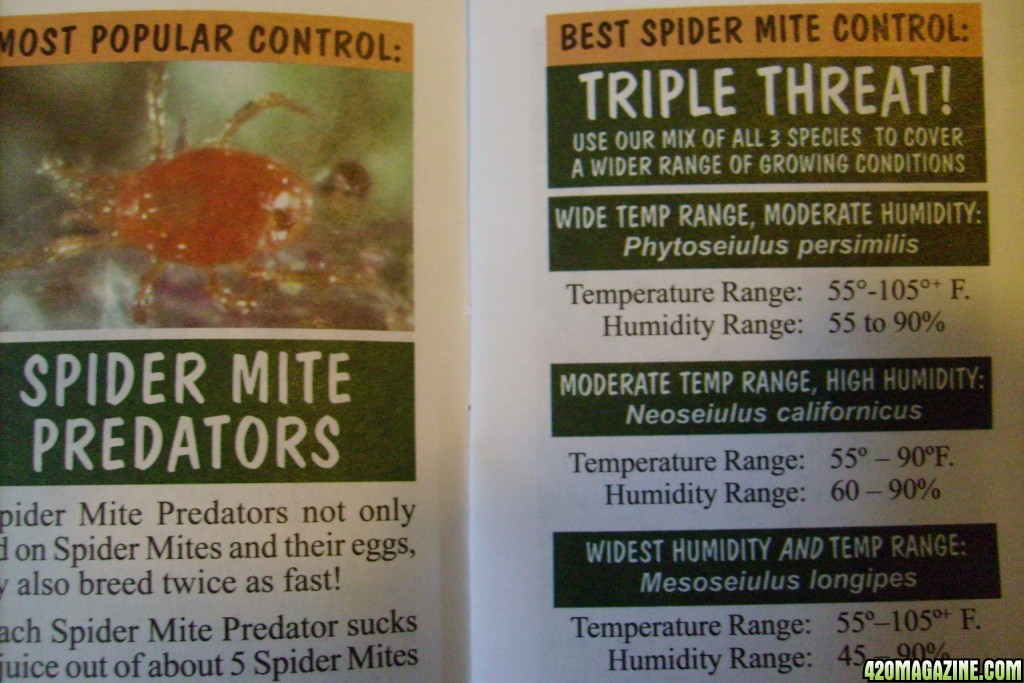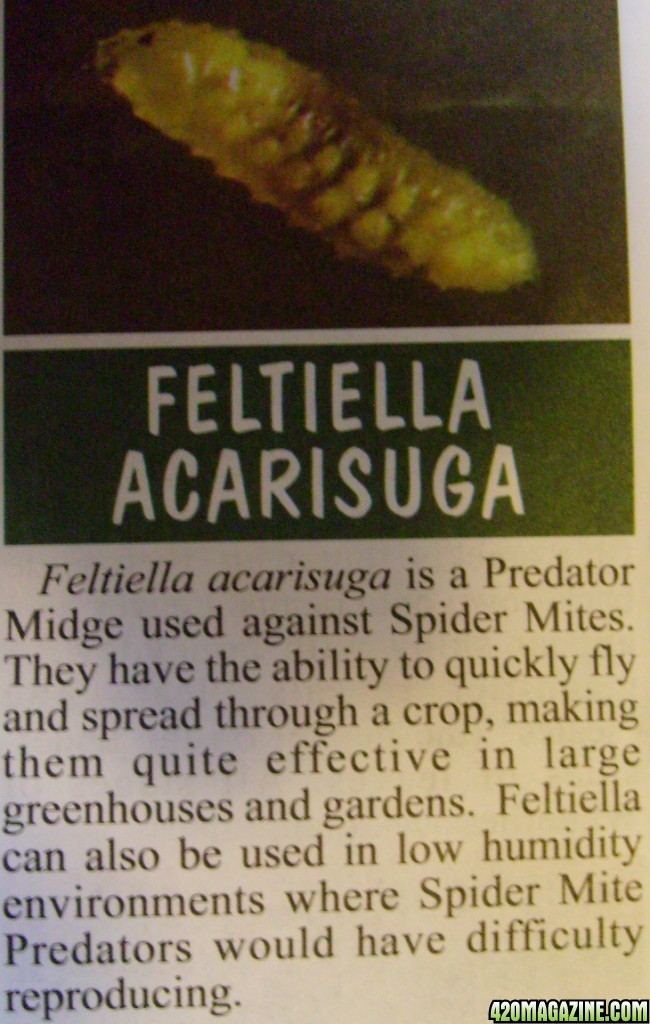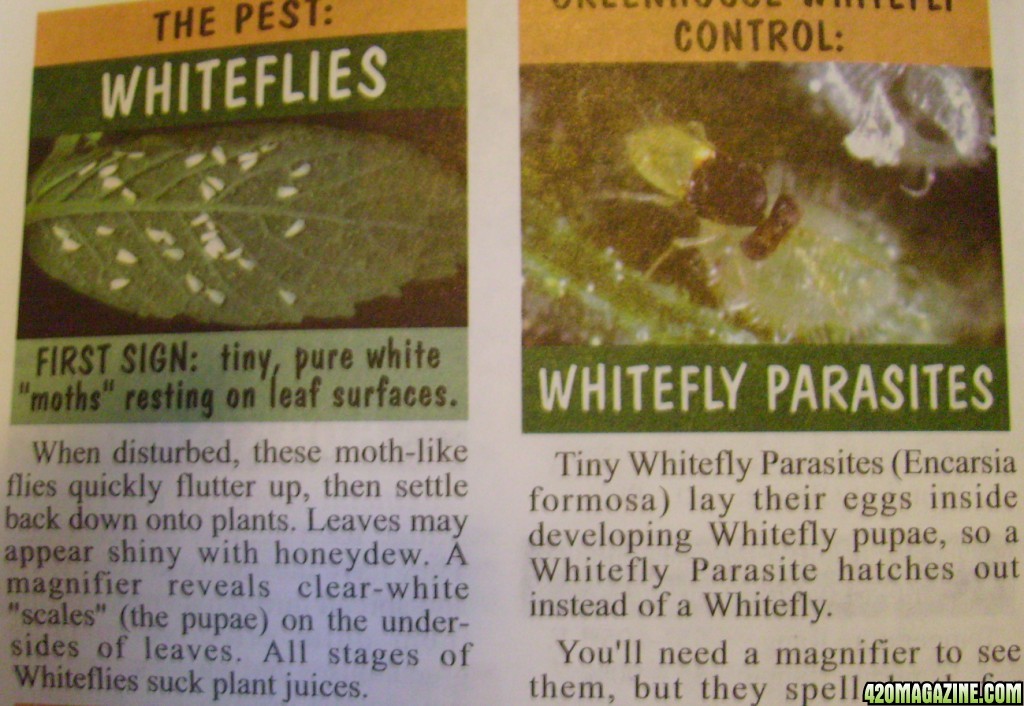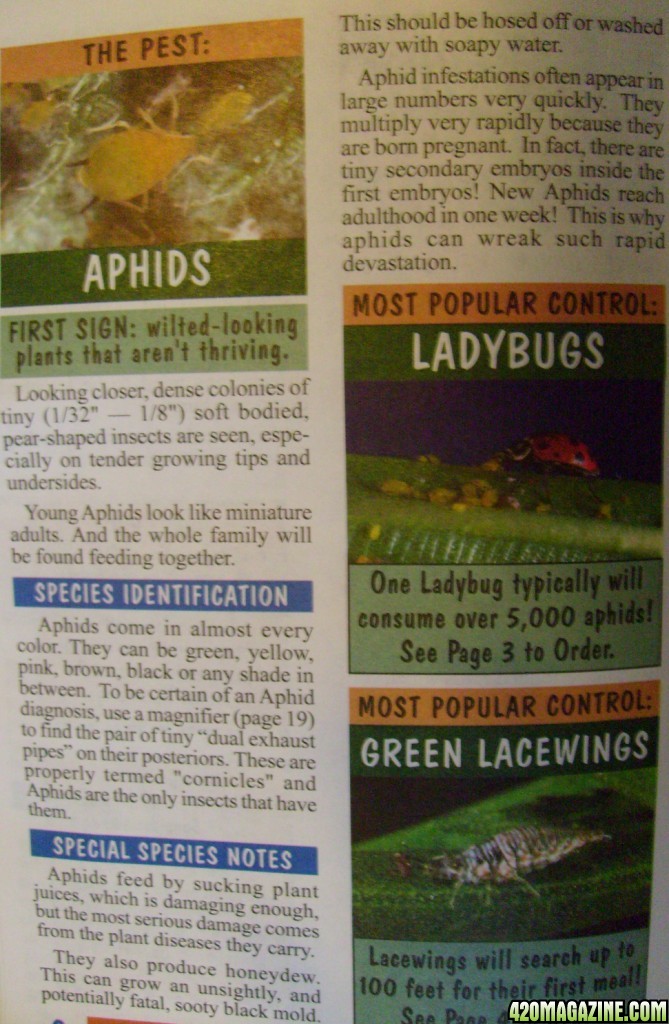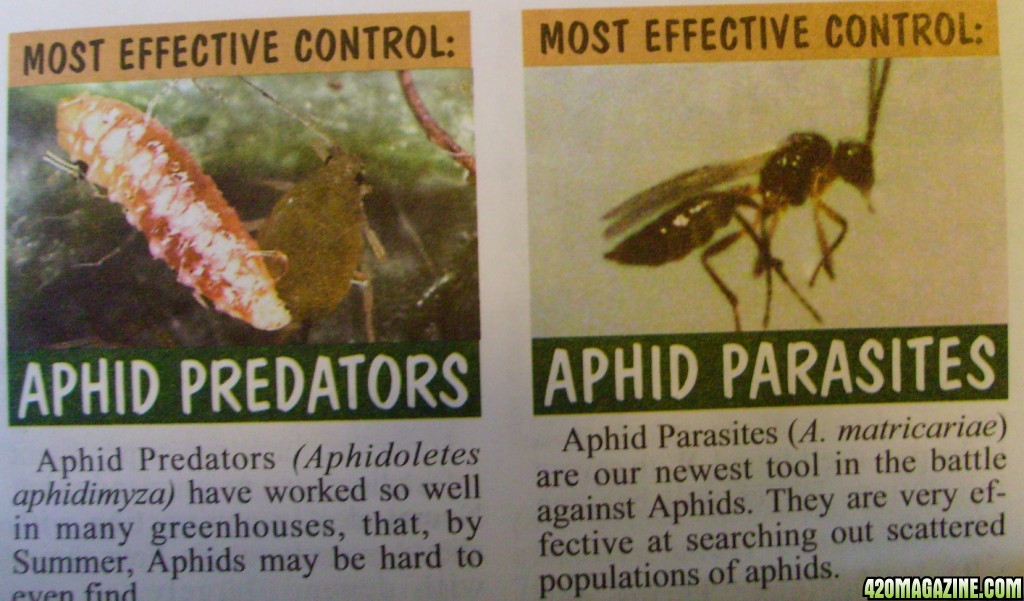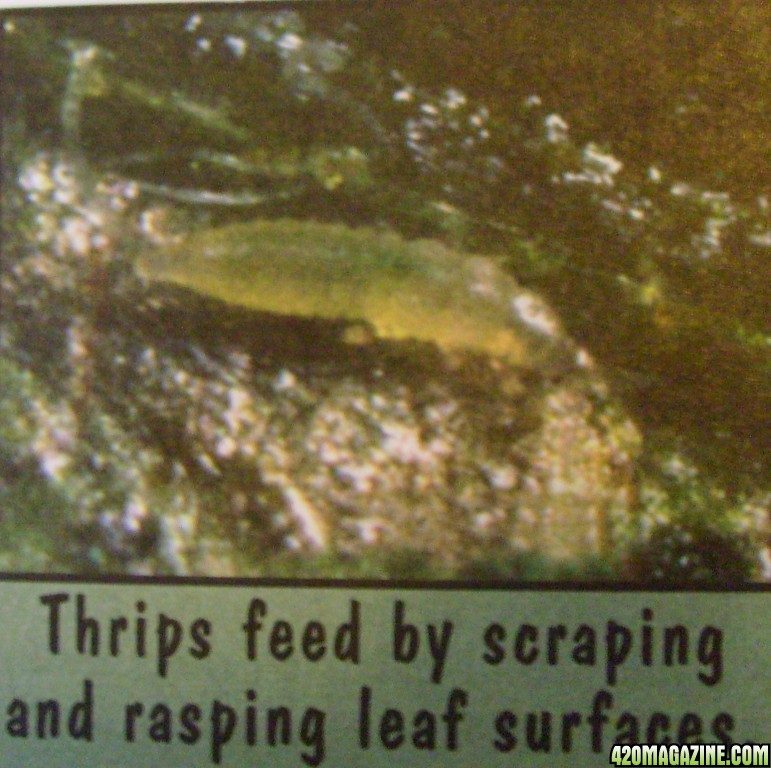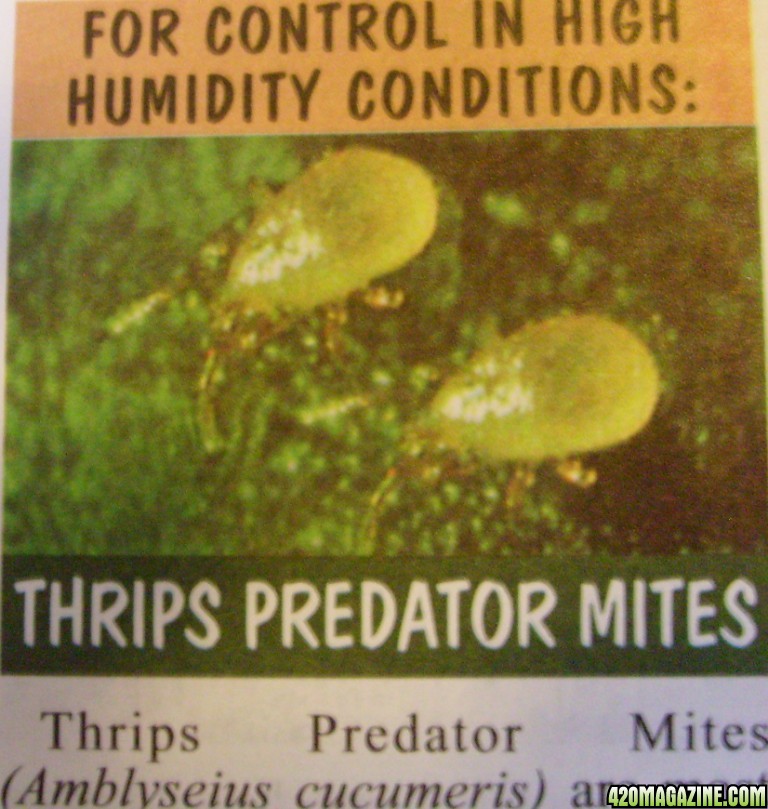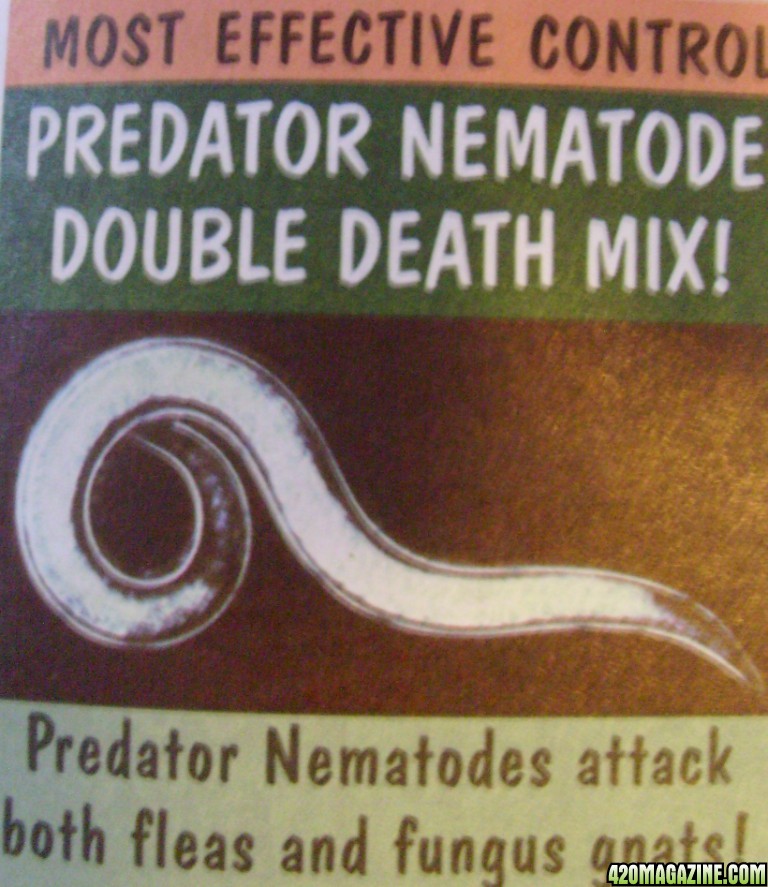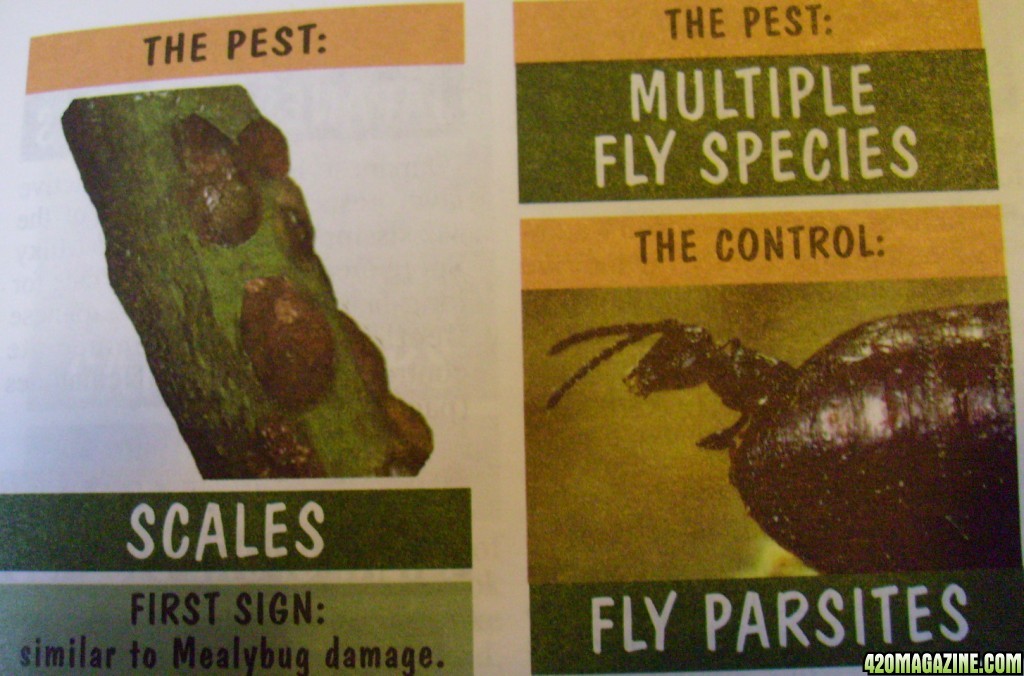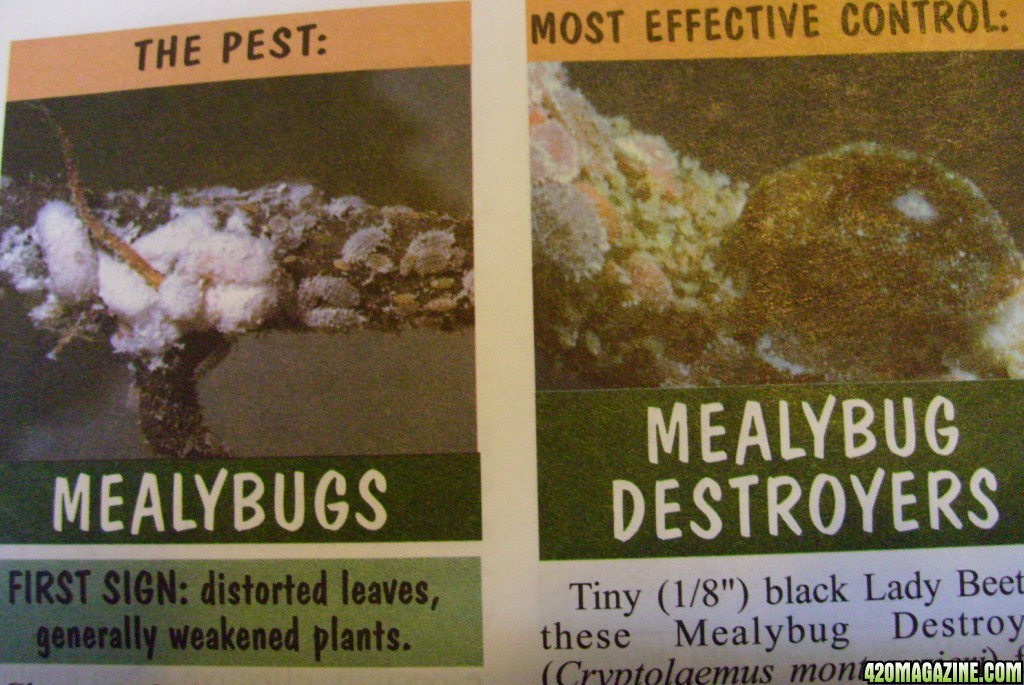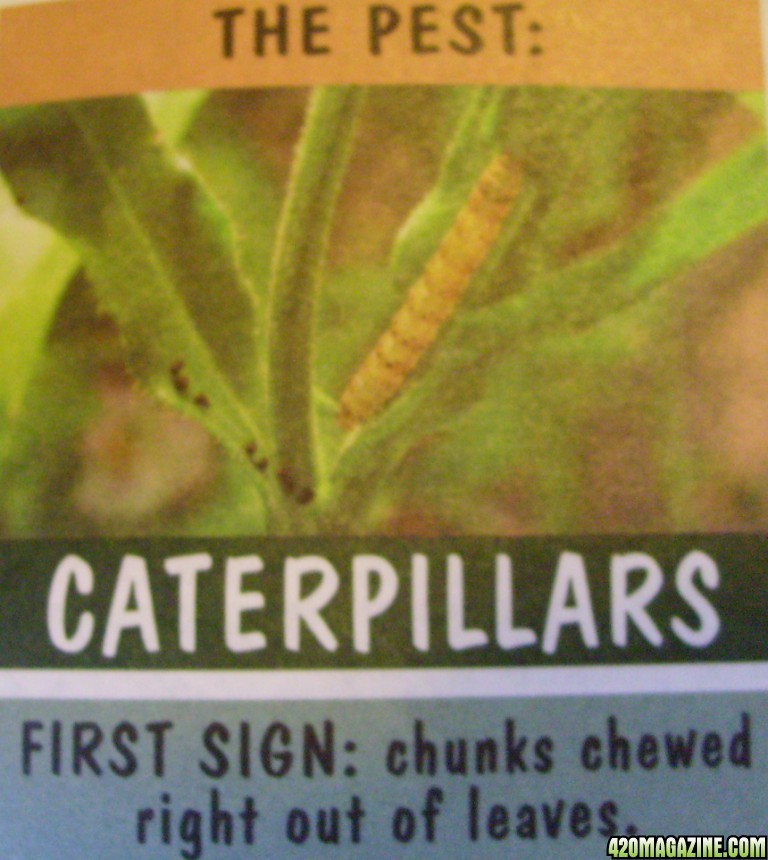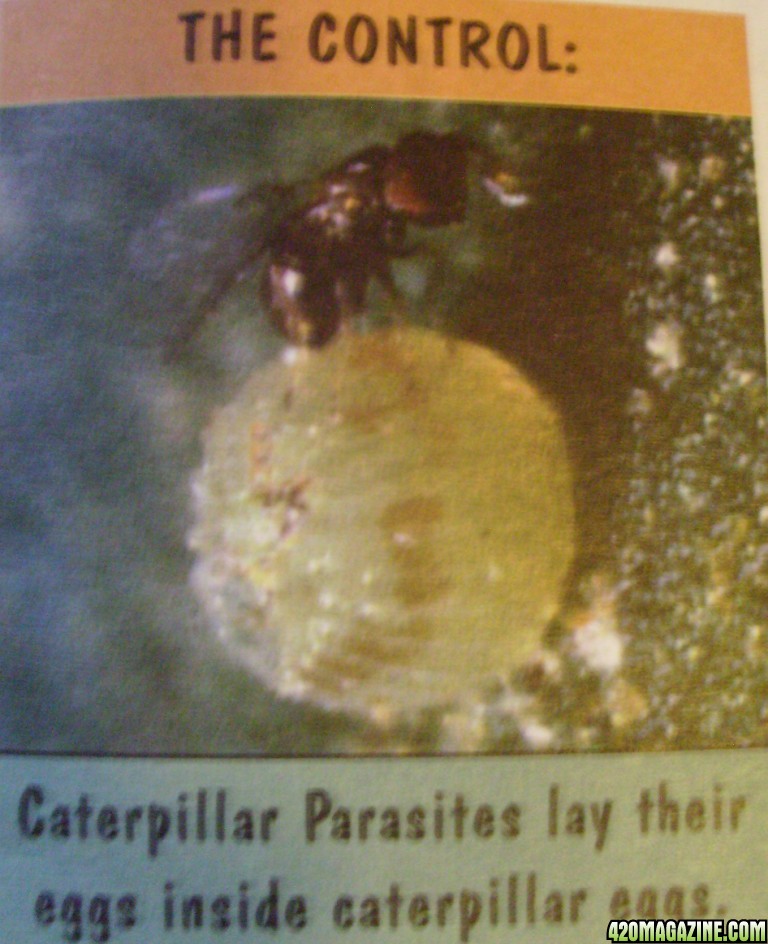thanks guys, I wasn't really pleased with how it turned out as I am REALLY not computer savvy. Here is some more technical info.
Mealybug Predator (Cryptolaemus montrouzieri)
Like Hippodamia convergens, the popular aphid predators, Cryptolaemus montrouzieri are ladybug beetles. Unlike their relative, though, these beetles are not wild-collected, do not aggregate and do not disappear just after release.
Crypts, with their shiny black body and dull-orange head and thorax, definitely prefer to dine on mealybugs (especially young ‘uns). They can clean up large populations. However, as most beetles are, C. montrouzieri are very opportunistic and will eat pests other than mealybugs: other scale insects (their crawlers or immature forms), insect eggs, etc.
These beetles tend to really love mealybugs the most, though!
The large 5 mm. Australian, adult female beetle lays its eggs in the cottony egg-masses produced by the pests — one egg per mass, usually, and up to 10 of them per day, for up to 50 days! The eggs hatch into white, shaggy-coated larvae which, to the inexperienced, look like mealybugs (a wolf in sheep’s clothing). These, too, are fierce predators, growing up to 1 cm. long and consuming 250 or so small mealybugs and their eggs (they’ll always eat the youngest first).
Mealybug Predator Information:
• Popular Prey: citrus mealybug (Planococcus citri); the comstock mealybug (Pseudococcus comstocki); the obscure mealybug (Pseudococcus obscurus); the solenopsis mealybug (Phenacoccus solenopsis); the Mexican mealybug (Phenacoccus gossypii) and many other related species, even the long-tailed mealybug (Pseudococcus longispinus) but only if it is present with another species which produce cottony egg-masses.
• Life-span: around ~3 weeks in their immature stages, then around ~1 month as adults
• Optimal Living Conditions: between 64-91°F with a relative humidity of 70% or greater (not mandatory for success, though)
• Usages: can be used almost anywhere, very versatile
• They do fly, but not in temperatures below 56°F
• They are attracted to white, so you should not wear white while releasing them
Aphid Predatory Green Lacewings (Chrysoperla rufulabris)
Chrysoperla rufilabris — also known as green lacewings — are aggressive aphid predators that have an appetite for other soft-bodied pests.
These nocturnal predators come as 500 eggs that are useful when you’re in no great hurry to get rid of the pests. The larvae are the only predatory form of this insect. Green Lacewings can tackle a great number of aphid species. Moreover these predators may eat outside of their aphid-preference diet to enjoy other soft-bodied pests.
The eggs are normally shipped loose in an inert medium of rice-hulls as a distribution carrier to facilitate the proper placement of the eggs. The larvae are very cannibalistic and must be separated in transit. This is accomplished by means of a frame or hexcell unit (though bulk-bottle forms are available which need immediate attention). The hexcell unit is comprised of little compartments which can be opened a-row-at-a-time for predator release.
Green Lacewing Information:
• Popular Prey: great number of aphid species as well as other soft-bodied pests (cale insect immature stages, including long-tailed and other mealybug species, whiteflies, and others, especially certain insect eggs)
• Life-span: roughly 30 days in their immature stages, then less than 2 months as adults
• Optimal Living Conditions: between 67-89°F with a relative humidity of 30% or greater
• Re-production: females lay up to 200 eggs amongst aphids that will start to eat the aphids right away (and eachother!)
• Usages: greenhouses, fields, interiorscapes (though not where the public will be after hours), orchards and gardens
• Keep ants away from the area where you place these eggs, because ants will eat lacewing eggs
Whitefly Predatory Beetle (Delphastus cataliniae)
Like Hippodamia convergens, Delphastus cataliniae, are exceptionally small ladybug beetles that are just as ferocious. These beetles, with their small, shiny round black bodies, love whiteflies, and they are capable of clearing out large populations of them. And, as most beetles are, D. cataliniae are very opportunistic and will eat pests other than whiteflies: spider mites, newly born aphids, insect eggs, etc.
Beetle Information:
• Popular prey: the greenhouse whitefly (Trialeurodes vaporariorum); the sweet potato or tobacco whitefly (Bemisia tabaci); the silverleaf whitefly (B. argentifolii); other Trialeurodes species; the Japanese bayberry whitefly (Parabemisia myricae); and more obscure, lesser-known species, including, supposedly, the California giant whitefly (sp. unk.) which we understand is a new threat in the west.
• The larvae, and adults, always eat the youngest, most tender morsels first.. Yumm, larvae!
• Life-span: 3 weeks in their immature stages, then 4-5 weeks as adults.
• Living Conditions: For optimum results, between 60-90°F with a relative humidity of 75% and up. (not a prerequisite, though)
• Cannot handle harsh winters or too much honeydew
• Uses: Greenhouses, interiorscapes, southern orchards, fields and nurseries. Anywhere conditions are right and food is plentiful!
Benefits:
These beetles have been known to completely devastate a well-established whitefly infestations in a small amount of time. The females demonstrate a keen sense of survival awareness for their young; laying the eggs in the center of whitefly egg-rings assures the young will find food regardless of the direction travelled after hatch, and thus find it easier to survive. The long-term establishment of these predators is possible in outdoor conditions, mostly. It’s tough indoors because it is nearly impossible to maintain an adequate food source. The beetles consume the whiteflies necessary for their establishment too quickly (this is probably going to really upset growers, huh?). These predators will consume some pollen and a small amount of honeydew (whitefly poop, yuk!). This will aid their proliferation by a small degree. Searching is the trait which most supports the widespread use of these beetles. They’re excellent at it. This allows the release of fewer beetles without compromising results. Especially in large outdoor applications where the hot-spots these beetles are famous for cleaning up are more spread out.
Gnat and Thrips Predator (Hypoaspis miles)
Hypoaspis miles is a soil-dwelling mite capable of the prevention, control, and management of various thrips and soil pests.
Not only are these mites predators of thrips’ prepupal and pupal stages, they are very effective fungus gnat predators as well.
These robust 0.8 mm. richly-colored tan to brown mites live, eat and reproduce in the soil or soilless medium in containers and planters and, on the walkways and floors of greenhouses (or on the Shiitake logs in the mushroom scenario). The H. miles females’ eggs — of which there are many — hatch into super small larvae which develop into tiny dark brown, almost black, nymphal forms before reaching adulthood. These, too, are fierce predators, consuming many pests, mostly the eggs and smaller larvae (first and second instar) of fungus gnats and the pupal stages of thrips.
Hypoaspis miles Information:
• Popular Prey: gnat, thrips, springtails
• Life-span: about 13 days from egg to ever-after
• Optimal Living Conditions: between 60-72°F (soil temperatures) with a relative humidity equal to that found in a friable, slightly moist medium, compost or soil
• Usages: Greenhouses/interiors are where these mites are most often used. However, outdoor nurserymen have also had outstanding results.
• Benefits: very cost-effective and can last a very long time
• Can be stored up to two weeks!
Nematodes (Heterorhabditis bacteriophora nematodes)
Control Grubs and Gnats with Parasitic Nematodes
These nearly-microscopic non-segmented roundworms called nematodes live in the soil and spend their lives exploiting the larvae and/or pupae of over 200 organisms for their own gain. They are entomogenous (en-toh-MAH-jen-us), meaning they develop on or within an insect.
Nematode Information:
• Popular Prey: fungus gnat larvae and many more economically important critters (just about anything they can crawl in, except other nematodes)
• Life-span: roughly 8 weeks all together — assuming the wax worm larva is the host used.
• Optimal Living Conditions: soil temperatures between 79-83°F for Hb with a low end of 65°F and prefer the soil, soilless medium, rockwool or other substrate, etc., to be moderately moist
• Usages: Greenhouses, fields, interiorscapes, orchards and gardens. I’ve seen the successful implementation of these species in just about every conceivable situation. This includes just about every conceivable media: soil/sod, peat-lite mixes, bark products, rockwool, etc
• Nematodes are extremely sensitive to UV rays (sunlight) and it can make them sterile in only 7 minutes, then kill them. For this reason, they should be applied in the evening or nighttime or light rain
• You can tell your nematodes are working if the grubs are 1) dead, 2) partially deteriorated — depending on how long after initial host entry they were discovered — and/or 3) tinged orange-red
• This species of nematode will bear up to 200,000 young ‘uns beginning in as little as 9 days
• They are very versatile and can be applied in many ways
• Nematodes will not harm people or animals, not even earthworms — they’re kin.
• Can be refrigerator stored up to 3 months!
How they work:
• This nematode species physically enters the host (grub, maggot, larva) and kills from within (endoparasitism). Entry is gained via the host’s mouth, anus or spiracles (breathing holes located along the sides of an insect). The Hb nematode, with its well structured and muscular, beak-containing head also has the ability to enter through the host’s soft, side-wall tissue.
• In the case of the Hb nematode, they simply search the soil, tracking down their host, slithering along the film of moisture surrounding the medium’s particulate matter, sampling as they go.
• Once inside the host, the nematodes settle in, shed a protective cuticle, mature, and begin feeding, defecating and reproducing. In their fecal matter lives a symbiotic bacterium enjoying the perfect harmony of interdependency with the nematodes. The bacterium present in the fecal matter of Hb nematodes is Photohabdus luminescens, in the Sc’s is the bacterium strain Xenorhabdus nematophilus, in the Sf’s the bacterium is X. bovienii. All types poison the host’s blood (called septicemia), thus killing it. The nematodes don’t actually do the killing, they just make it all possible and we all reap the benefits (except the old grub that is).
Praying Mantis
The praying mantis, Tenodera aridifolia sinensis, is not an effective biocontrol agent but they are awesome predators that can server other purposes.
Praying mantids. Some say they’re valuable “general” predators. Well, they’re certainly not picky about what they eat (and they do eat ladybugs, contrary to popular thought). Praying mantises are territorial and cannibalistic.
Praying mantis are awesome to have around any garden. Although they are not so good biocontrol agents, they are still symbolic of biocontrol and IPM and look really cool. Mantids are territorial stalkers of insects both good and bad. They can track a single fly for days, and finally when it gets close enough, the mantis strikes out its forelegs, captures the fly and rips its head off to devour the meal. COOL!
The yield of an egg-case is normally between 50-400 baby mantids, each about three-quarters of an inch long. They make great educational tools, pets or just a novelty to have in the garden!
Ladybugs (The Ladybird Beetle Hippodamia convergens)
Ladybugs, as they are called by the masses, are mean little buggers. They don't have long, curly eyelashes or wear bows because they are voracious predators even in their cute red/orange, black-spotted outfits. Ladybugs are now a symbol of biocontrol and Integrated Pest Management (IPM).
Although they tend to be flighty even if released properly, the Ladybugs that stick around will be diligent to chow down on their favorites: aphids, highly problematic creatures. Ladybug beetles also enjoy mites, insect eggs, etc.
Ladybugs can be very cost-effective and are a natural way to rid your lawn and garden of unwanted pests.
Ladybug Information:
• Popular prey: aphids, mites and insect eggs
• Life-span: 28 days in their immature stages, then around 11 months as adults
• Optimal living conditions: 66-88°F with a relative humidity of 40% or greater
• Usages: can be used just about everywhere, very versatile
• Can be refrigerator stored up to 3 months!
Spider Mite Predator Stethorus punctillum
These tiny 1.5-2 mm. black beetles (Stethorus punctillum) are relatively new to the commercial biocontrol industry, although they have been around for a while.
These Spider Mite Predator beetles, as their name implies, have a pretty impressive track record for controlling various spider mites. Being beetles — which are fairly opportunistic by nature — they may impact other critters, as well. There is no indication that predatory spider mites are at risk of being eaten, however. This is probably because predatory mites are very fast and tend not to hang out on one leaf for too long.
Stethorus punctillum look similar to Delphastus cataliniae but tend to be a little hairy like their scale eating cousins, Rhyzobius lophanthae..
Beetle Information:
• Typically control: two-spotted mite, carmine red mite (Tetranychus urticae and T. cinnabarinus, respectively); the European red mite (Panonychus ulmi); and another species, Metatetranychus ulmi, for which there is no common name, if it has one, is unknown to me, but may be a synonym for the European red mite mentioned above, and possibly other mites.
• Life-span: 18 days in their immature stages, then 4-5 weeks as adults
• Optimum conditions: 69-90°F with a relative humidity of around 60% (but not mandatory for success)
• Provide outstanding results in the short- and long-term
• They can fly and can enter trees
• Usages: Anywhere mites occur and best results so far in greenhouse environments
Aphid Parasitic Mini-Wasps (Aphidius colemani)
Aphidius colemani are aphid parasitoids and very useful and effective for the prevention and low-infestation management of various aphid species.
These 2-3 mm. mini-wasps are best used for preventing the establishment of more than 40 species of aphids. They can also tackle light to medium infestations. And, if established, they can adequately protect a crop throughout the season, with some possible exceptions in late summer.
Aphidius colemani, seem to be the product of choice when melon or cotton aphids (Aphis gossypii) are present as these are typically the aphid species on which they are reared.
Aphid Parasitic Mini-wasp Information:
• Popular Prey: Aphids
• Life-span: roughly 2 weeks in their immature stages, then 2 weeks as adults
• Reproduction: lay between 200 and 300 eggs in eggs of aphids and the larvae kills the aphids from within
• Optimal Living Conditions: between 64-75°F with a relative humidity of around 80%, but not mandatory for success
• Usages: Greenhouses, fields, interiorscapes, orchards and gardens, very versatile
• Benefits: these wasps work in fairly cool areas with low levels of light and tend to return the following years
Moth Egg Parasitoids (Trichogramma brassicae)
These 0.9 mm. mini-wasps are very popular and very effective Lepidopteran egg parasitoids. Lepidoptera (lep-ih-DOP-ter-rah) is the name of the order to which moths and butterflies belong. The eggs of over 150 species assigned as members of this order can be parasitized by the Trichogramma spp.
(Sitotroga cerealella) adhered to a card which is perforated into 30 squares, is the product of choice when targeting the eggs of moths whose larvae are pests of crops.
These parasitoids work by laying up to 300 eggs in the eggs of many Lepidopteran spp., killing these would-be harmful insects and creating more mini-wasps.
Mini-wasp Information:
• Some popular hosts of these mini-wasps include the eggs of: the Gypsy moth; codling moth (Cydia pomonella); diamondback moth (Plutella xylostella); Oriental fruit moth (Graphiolitha molesta); tomato pinworms (Keiferia lycopersicella); cabbage loopers (Trichoplusia ni); imported cabbage worms (Pieris rapae); tent caterpillars (Malacosoma spp.); and many, many more, even the grossly damaging tobacco/tomato hornworms (Manduca spp.).
• Life-span: roughly 7 days in their immature stages, then up to 10 days as adults (can create up to 30 generations per year)
• Optimum conditions: 70-85°F with a relative humidity of around 60%
• Cheap, easy and effective
• Usages: Greenhouses and interiorscapes have employed these wasps successfully. Mainly, however, these parasitoids are used in field and row crops, orchards and gardens.
• Be ware of ants as they love the eggs and can rob them from the squares
